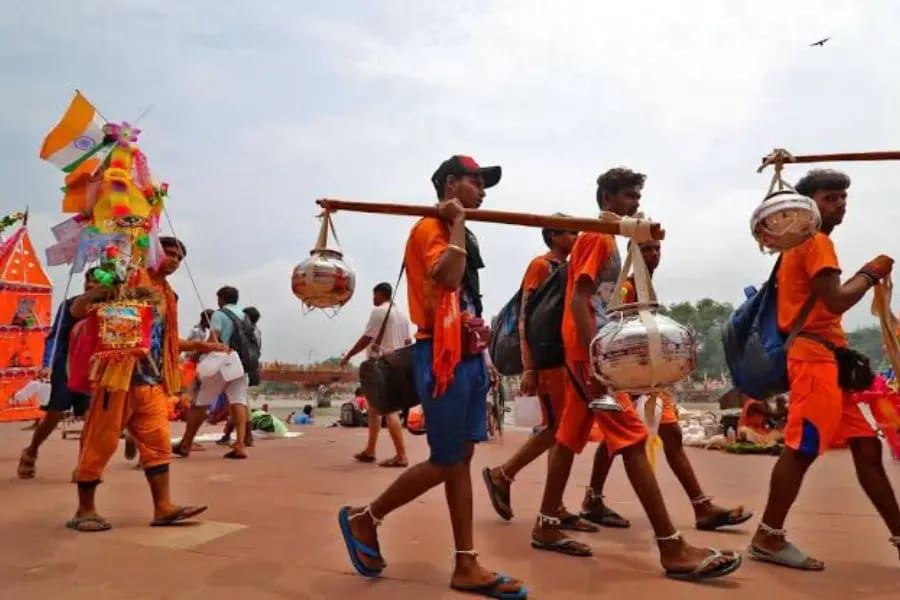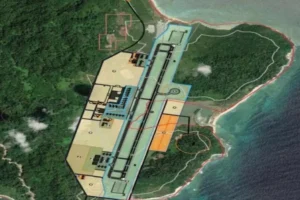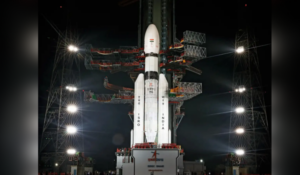
Noida officials have unveiled a detailed plan to allow travellers to have a safe and accurate journey for the Kanwar Yatra 2025. Details outlined in the traffic coordination plan include a dedicated Kanwar travelling area. Also, monitoring systems to provide updates, an ultimate path along with limited lane restrictions during the Kanwar Yatra, and additional traffic personnel movement.
Also, this is part of a larger focus of the city to take care of Kanwar pilgrim’s beliefs and safety. It will be done while reducing inconvenience to local commuters who have been impacted by the Yatra. It has been the number one talking point in Noida in trending news today.
Kanwar Yatra Route Inside Noida
Pilgrims first start their journey in Noida from Mayur Vihar coming from Delhi and pass the Shani Temple and Okhla Bird Sanctuary. Their last stop in Noida is Kalindi Kunj. This committed route is a predominately four kilometres. It is part of a larger path for commuters travelling south to Delhi or Faridabad.
Also, in order to allow organized traffic to flow, during the yatra, two (2) of the four (4) lanes from Okhla Bird Sanctuary to Okhla Barrage at Kalindi Kunj will be blocked off for a period when the yatra is active. A effective date will be from July 11 to August 9, 2025, which is live in the period identified for the yatra.
Dedicated Kanwar Unit and Control Room
Noida Police has shared the launch of a dedicated Kanwar Cell. This will focus on traffic management and the safety of pilgrims. A control room will be created, following the Noida Entry Gate at Sector 14-A for monitoring traffic and emergency response.
A person from the traffic department said, “We met on Thursday and finalized the plan. The Kanwar Cell will oversee activities and will closely work with units in Delhi and Ghaziabad.
Logging and Diversions
So, to minimize traffic disruptions and monitor the arrival of devotees, we will have 500 traffic officers at key monitoring points. Chilla Road, where the swallowing of traffic can be controlled. We will shut traffic inbound for safe passage for pilgrims.
Lakhan Singh Yadav, Deputy Commissioner of Police (Traffic) Noida said “We have collaborated with Ghaziabad Police and written a plan for the management of the yatra”.
In addition, more officers will be available for unplanned traffic incidents and emergencies.
Besides, an extensive diversion plan for commuters is expected to be announced in the near future. This will monitor drivers along broad alternate routes and busy times to avoid.
Importance of the Kanwar Yatra
The Kanwar Yatra is one of the biggest annual religious festivals in North India. It occurs every July and August. The devotees of the Sri Kanwar Yatra are called the Kanwariyas. The Kanwariyas collect holy water from the Ganga, at Haridwar primarily. They walk with it for many hundreds of kilometres to offer it at the Lord Shiva temples where they live.
As the footfall figures continue to rise, and given the extensive participation in Kanwar Yatra, especially in places such as Noida and Delhi, traffic management is crucial to avoid chaos and ensure safety for everyone, including local residents and visitors.
What Travelers Can Expect and What They Should Expect
Therefore, daily commuters in Noida should expect changes in their routes and expectations of delays. It is for people travelling in the high Kanwar movement time. Begging early, daily commuters in Noida, specifically traveling between Sector 14-A and Kalindi Kunj. Local authorities are urging all citizens to work with them, and pay attention to the live traffic updates.
Also, with the revised plan in place and a dedicated task force in place to manage the surge. Noida’s administration appears well ready for this year’s yatra, emphasizing safety, efficiency and respect for the spiritual sentiment – making it a focus of the evolving news trending locally.
The 4-kilometre Kanwar Yatra route plan in Noida represents a progressive approach to blending urban pragmatism with tradition. City preparations are underway to accommodate the oncoming spiritual surge, with synchronized activities from the traffic police, pre-planned road closures, and increased surveillance, should help to provide a seamless yatra experience for many devotees.






